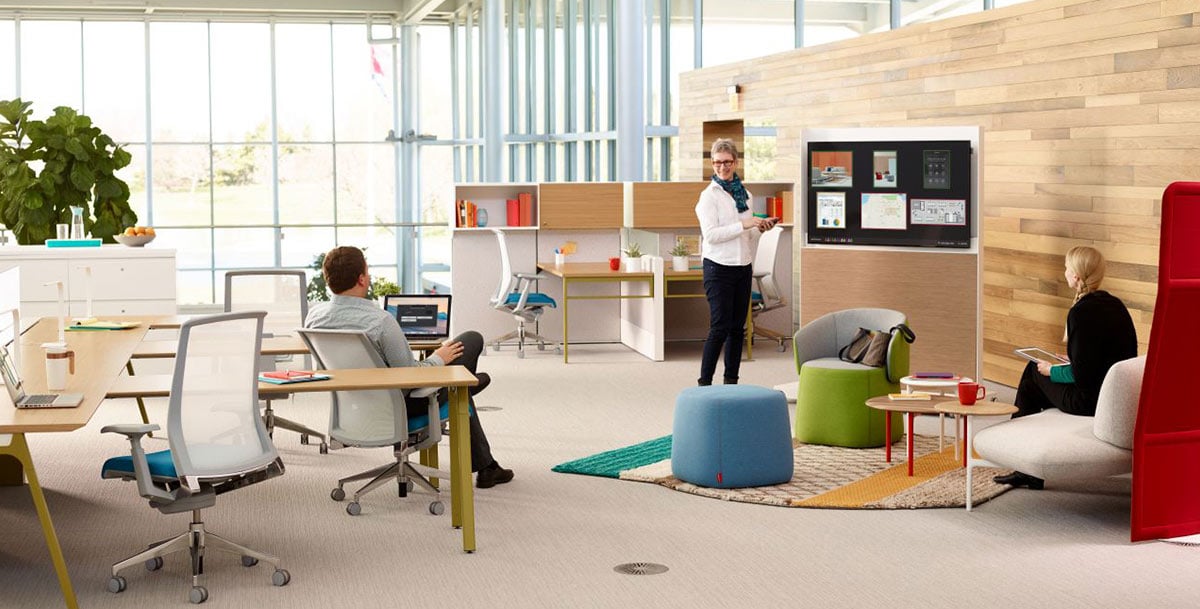
IoT, or the Internet of Things is phrase that’s becoming more common and infiltrating our everyday. From the way we hail taxis to how we listen to music and do our banking, our lives are full of one-click apps that let us conduct business as usual from the convenience of a handheld device. We are a connected society and that trend is seeping into the workplace.
According to Merriam-Webster, Internet of Things (IoT) is “the networking capability that allows information to be sent to and received from objects and devices (such as fixtures and kitchen appliances) using the internet.”
With more employees working from their laptops and taking calls and texts from their mobile phones and tablets, the workplace is shifting to an IoT-enabled practice. Companies are investing in wireless technologies. They are making localization possible, affording workers and their guests access to the internet from anywhere in the office. They are providing a platform for easy, on-the-go communication, making indoor and outdoor collaborative spaces WiFi-accessible.
In addition to advancing communications and allowing staff to be untethered from their desks, corporations are also investing in wireless sensors. They are taking a cue from “smart homes” where thermostats, security cameras and systems, and appliances, are automated and controlled wirelessly.
Data-Driven Design for Space Optimization
How does this apply to the workplace? New York Times bestselling author and technology futurist, Daniel Burus, elaborates on the definition of IoT, stating “The Internet of Things really comes together with the connection of sensors and machines. That is to say, the real value that the Internet of Things creates is at the intersection of gathering data and leveraging it.”
As workplace designers concerned with space optimization and worker satisfaction, gathering and analyzing data is a must. Understanding how often individuals use a space, occupy a chair, or reserve a conference room, can help us better design an office that works for them.
Just as smart homes allow us to better monitor our household activities, smart offices allow us to better monitor our office well-being. The smart office encompasses everything the smart home does — the technology allows us to create comfortable work environments using automated thermostats and lighting sensors, as well as paves the way for a more secure workplace with internet-connected door locks and security cameras.
Moreover, the smart office incorporates occupancy sensors that allows us to analyze data in real time. As smart office sensors expand their functionality, workplace designers will be more adept at designing offices that connect workers to each other and their work spaces. The smart office is the office of today.
Occupancy sensors are playing a pivotal role in transforming hybrid offices into efficient and optimized workspaces. As companies embrace the Internet of Things (IoT), these sensors are being used to gather and analyze data in real-time, providing valuable insights into space utilization and worker behavior. By understanding how often individuals use a space, occupy a chair, or reserve a conference room, workplace designers can create offices that are tailored to the needs and preferences of their employees. Just like smart homes, where automation and wireless controls enhance comfort and security, smart offices are now equipped with occupancy sensors that enable a deeper understanding of office dynamics and facilitate better workplace design. By harnessing the power of IoT, companies can create a connected and data-driven work environment that promotes productivity and enhances employee satisfaction.
To learn how we can transform your office into an IoT-enriched space focused on workplace optimization, send us an email.






